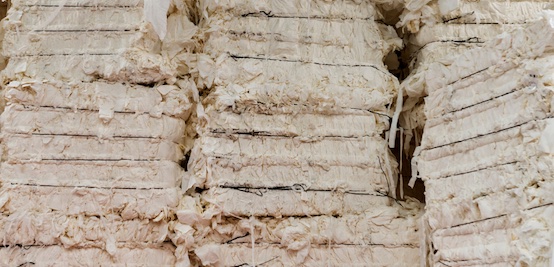#Market Analysis & Forecasts
The worldwide digital textile printing industry is projected to reach $6.6 billion by 2030
The global digital textile printing market size is projected to reach USD 6.65 billion by 2030, according to this new report. The market is expected to witness a CAGR of 12.1% from 2022 to 2030.
Companies Mentioned
Seiko Epson Corporation
Mimaki Engineering
Kornit Digital
Electronics for Imaging
D.Gen
Roland DG Corporation
Durst Phototechnik
Dover Corporation
Konica Minolta
Ricoh
Sawgrass Technologies Inc.
Spgprints B. V.
Atexco
Colorjet
Brother Industries
Aeoon Technologies
Mutoh
Agfa Graphics
Digital printing refers to the process of printing a digital image on a variety of substrates materials. Digital textile printing is used to print on a variety of textile materials such as cotton, polyester, silk, nylon, and other synthetic fabrics.
Any design or pattern designed digitally can be printed on clothes, fabric rolls, and other textile items such as accessories, bedsheets, curtains, carpets, etc. The designs are generated with the aid of software. Printing techniques in digital textile printing are direct-to-garment (DTG) printing and roll-to-roll/direct-to-fabric printing. Pre-treating the fabric is essential in digital printing as it ensures that the fabric retains the ink effectively and allows the use of a broad set of colors on the textile.
Digital textile printing is set out to be the "next generation" of printing. Many textile business owners are investing in digital printing technology as fabric printing transitions to the modern form of printing. To suit the demands of the new generation, the textile sector around the globe is embracing digital printing technology for printing novel designs on garments and fabrics. Different types of inks are utilized for digital textile printing. Acid, reactive, dispersion, pigment, sublimation, and reactive are the most commonly used dyes for digital printing. These inks are available in vivid colors and can be utilized for commercial printing purposes.
Choice of ink differs with each fabric; for example, reactive inks are mostly used on cotton, linen, and rayon, dispersion inks for polyester, and acid inks for silk and nylon. As compared to traditional printing, digital textile printing has several benefits. The advantages of digital printing include the ability to print multiple colors on a garment at once, the ability to print on multiple garments at once, ability to print a varied range of color shades, among others. It also enables accurate, faster, and small volume printing at an economical cost. Also, the digital printing process is more efficient and economical. Designers, and textile businesses, are therefore increasingly adopting digital textile printing technology.
Digital Textile Printing Market Report Highlights
Digital textile printing is gaining traction owing to the ability of the technology to offer accurate and fast printing thereby reducing the turnaround time
The sublimation segment dominated the market in 2021 and is expected to expand its market share to more than 53% by 2030. Sublimation is expected to be the fastest-growing ink type during the forecast period
The clothing/apparel segment contributed to more than half of the market share in 2021 and is expected to continue dominating the market during the forecast period
Cotton was the most widely used material type with a market share of more than 52% in the year 2021. While polyester is expected to be the fastest growing material during the forecast period with a CAGR of 12.9%
The Asia Pacific regional market is expected to be the fastest growing region during the forecast period of 2022 to 2030. China and India are the market leaders in the region
Key Topics Covered:
Chapter 1 Methodology and Scope
Chapter 2 Executive Summary
Chapter 3 Industry Outlook
3.1 Market Segmentation & Scope
3.2 Digital Textile Printing Market Size and Growth Prospects
3.3 Digital Textile Printing-Value Chain Analysis
3.4 Market Dynamics
3.4.1 Market driver analysis
3.4.2 Market restraint analysis
3.4.3 Market opportunity analysis
3.5 Key Opportunities - Prioritized
3.6 Digital Textile Printing-Key Company Analysis, 2021
3.6.1 Key Company Analysis
3.6.2 New Entrants-Key Company Analysis
3.7 Industry Analysis - Porter's
3.8 Digital Textile Printing Market-PESTEL Analysis
3.9 COVID-19 Impact on Digital Textile Printing Market
Chapter 4 Digital Textile Printing Market: Printing Process Estimates & Trend Analysis
Chapter 5 Digital Textile Printing Market: Operation Estimates & Trend Analysis
Chapter 6 Digital Textile Printing Market: Textile Material Estimates & Trend Analysis
Chapter 7 Digital Textile Printing Market: Ink Type Estimates & Trend Analysis
Chapter 8 Digital Textile Printing Market: Application Estimates & Trend Analysis
Chapter 9 Digital Textile Printing Market: Regional Estimates & Trend Analysis
Chapter 10 Competitive Landscape
For more information about this report visit:
https://www.researchandmarkets.com/r/766kxy















